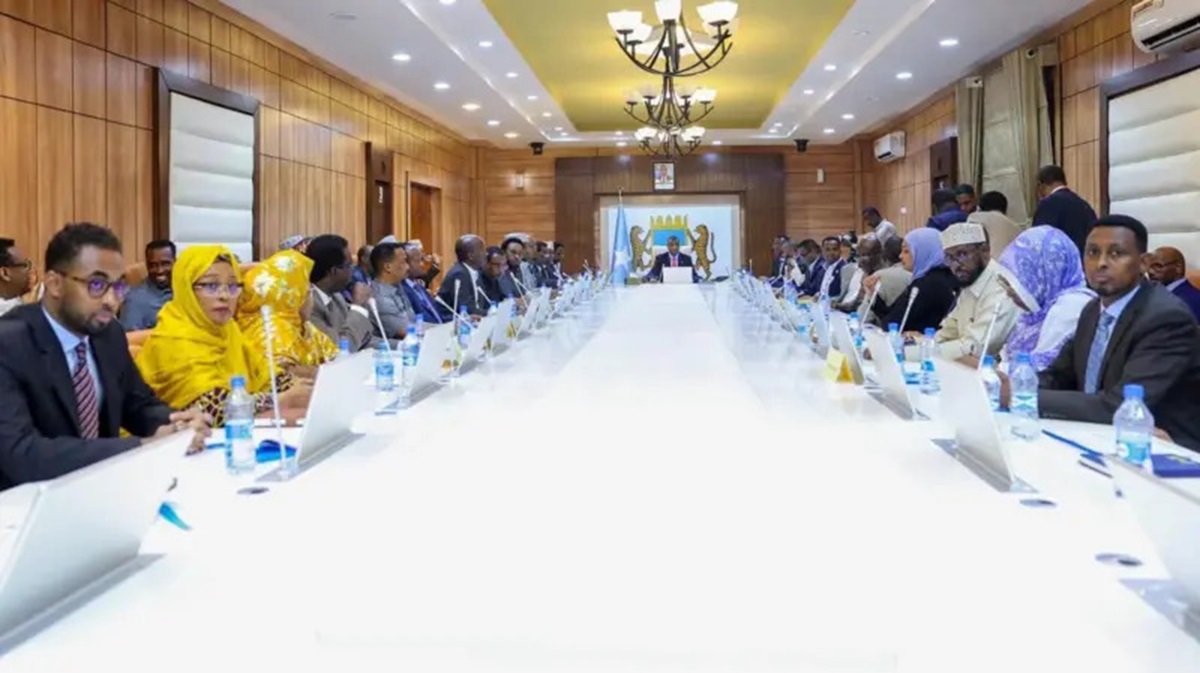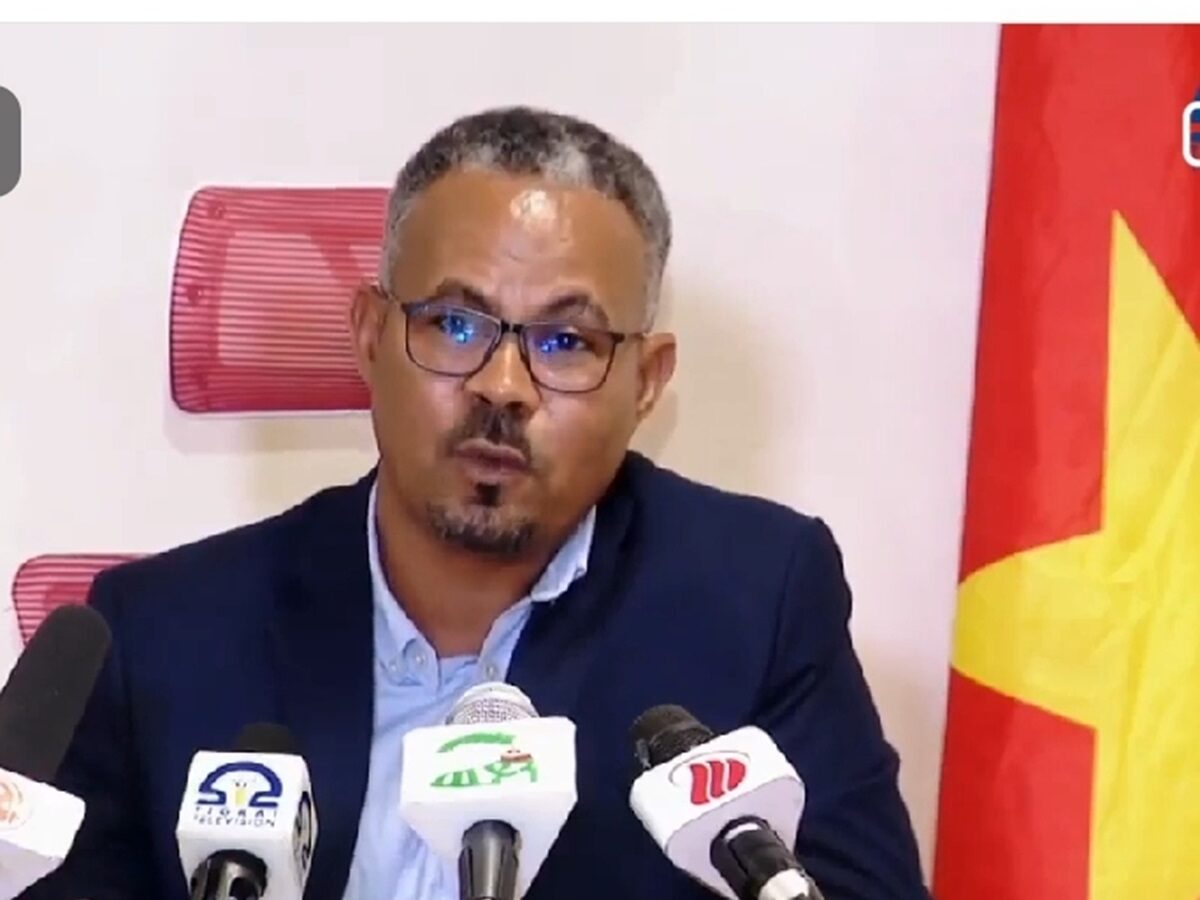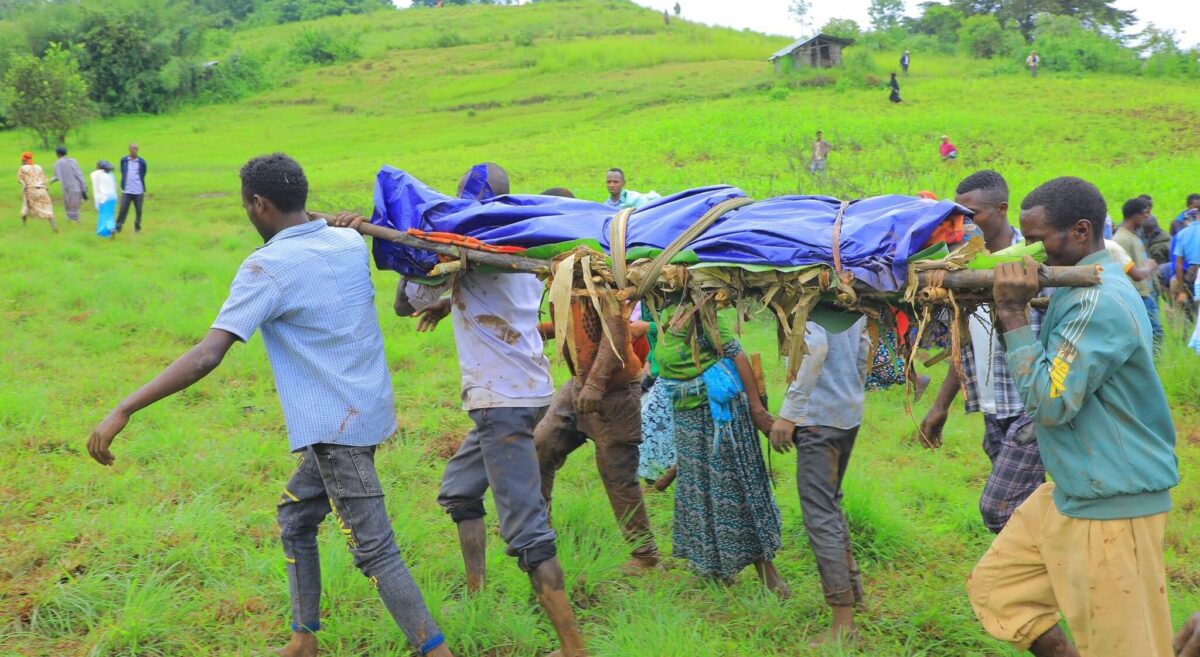
By Asafa Jalata (PhD)
Addis Abeba – Ethio-Amhara elites collectively characterize the Abiy-led Ethiopian government and Oromo liberation organizations, namely the OLF and the OLA, as the Oromummaa government. This is even though Ethio-Amhara political and religious organizations were, until recently, allied closely with the Abiy government. This piece argues that there is no relationship whatsoever between the Ethiopian government’s ruling elites and Oromummaa and illuminates why the Ethio-Amhara elites characterize the Abiy-led Ethiopian ruling elites as “Oromummaa government”. But, before delving in, lets conceptualize Oromummaa.
Understanding Oromummaa
Oromummmaa is a complex and expanding concept that can be defined on five levels. The first level is called basic Oromummaa, which means being Oromo and practicing some aspects of Oromo culture, language, belief systems, values, norms, customs, and traditions. Every Oromo has the primary form of Oromummaa, and most Oromos speak the same language, called Afaan Oromoo, and claim a common historical and cultural background. As the total expression of Oromo peoplehood, Oromummaa has been developed from the historical, cultural, religious, and philosophical experiences of Oromo society. Basic Oromummaa is also built on personal, interpersonal, and collective connections within Oromo society. The Ethiopian colonial state has attempted to suppress these connections for one century and a half.
The Oromo have been denied the rights of self-expression, organization, education, and the freedom of the media. To restore these rights, the Oromo have engaged in the politics of liberation and democracy. The colonialists have attacked the individual psyche and biography of the Oromo, as well as their collective culture and history. Consequently, basic Oromummaa primarily remained at the personal and interpersonal levels because the Oromo were denied the opportunity to form and maintain their autonomous national institutions. The colonialists have expropriated the Oromo’s economic resources and destroyed Oromo institutions, cultural experts, and leaders. Oppressors don’t only want to control the oppressed economically, culturally, and politically; they also want to control their minds, thus ensuring the effectiveness of domination. The mental control of the oppressed causes personal and collective damage.
However, the Oromo people’s cultural memory has survived to a certain degree, even though Ethiopian colonialists have restricted opportunities to develop the Oromo system of knowledge by limiting the transmission of Oromo cultural experiences from generation to generation. Successive Ethiopian governments have designed policies and practices to uproot basic Oromummaa to produce individuals and groups who lack self-respect and are submissive and ready to serve the colonialists at the cost of their people. The colonial state has also suppressed Oromo history, culture, and vocabulary while promoting that of the Abyssinians.
During the 1960s, however, Oromummaa expanded into the ideological and political arena. The second level of Oromummaa—one’s development of Oromo nationalism and participation in the struggle for national self-determination—began to emerge during this era with the establishment of the Macha Tulama Self-Help Association and the Oromo Liberation Front (OLF). Oromo nationalist ideology supports mobilizing Oromo society to restore their national culture, history, identity, language, human dignity, and freedoms that Ethiopian colonialism has attempted to suppress and destroy Oromummaa, as Oromo nationalist ideology, defines and promotes Oromo political, material, and cultural interests and seeks to develop an Oromo political community and transform it into a state by resisting all powers and ideologies, mainly Ethiopianism, that have kept Oromo society under political, cultural and economic oppression. The year 1991 was another keystone era—more Oromos began to develop national political awareness after the Oromo Liberation Front (OLF) joined the Transitional Government of Ethiopia led by the Tigrayan People’s Liberation Front (TPLF) (even though the OLF would be pushed out in 1992).
Political domination is practiced through ideological hegemony. Ethiopianism as an ideological hegemony has been imposed on the Oromo via physical coercion, including terrorism, mental genocide, and other political and cultural mechanisms. It runs entirely counter to the liberation ideology enshrined in Oromummaa, which is informed by the principles of egalitarian Oromo democracy of the gadaa/siqqee system. Oromummaa refutes false or biased knowledge and challenges Ethiopianism’s reactionary narratives about the Oromo that attempt to naturalize and justify colonialism and all forms of social hierarchies, injustices, and exploitation. In other words, Oromummaa is the foundation of the Oromo national movement for liberation, egalitarian democracy, and national self-determination. Dismantling the political ignorance, fatalism, and inferiority complex that have chained the minds of some Oromos who have subscribed to Ethiopianism is the first step toward individual freedom, but if significant numbers do and develop the nationalist ideology of Oromummaa, that will lead to national liberation. Even though the development of Oromummaa is rooted in an Oromo cultural foundation, it recognizes the importance of multicultural and critical knowledge and theories.
On the third level, Oromummaa encapsulates a repertoire of knowledge and values that are prerequisites for building Oromo national leadership and organizational capacity for mobilizing and organizing the nation to liberate itself from all forces of injustice. This Oromummaa-based knowledge, or Oromo cultural capital, reveals the importance of accessing the Oromo knowledge bank, which has accumulated Oromo cultural traditions over centuries to facilitate knowledge development for liberation and cognitive liberation among Oromo society. Without having the knowledge for liberation that develops mental freedom, Oromo society cannot effectively organize and struggle against the forces of unfreedoms.
On the fourth level, Oromummaa, as a national project, mobilizes the nation to build the national culture, history, political economy, sovereignty, and ethos that are the markers and emblem of the Oromo nation. Entry into this level requires knowledge of Oromo history and culture, a critical and thorough understanding of Oromo and global politics, and the ability to predict and assess possible scenarios for the future of the Oromo nation. The fifth level of Oromummaa, called global Oromummaa, expands the principles of freedom, justice for all, national self-determination, and egalitarian multinational democracy beyond the Oromo nation to our neighbors and the global community. Using the philosophy of safuu (moral and ethical order), global Oromummaa promotes horizontal and democratic relations among all the various peoples colonized and brutalized within the Ethiopian colonial state and beyond.
The false claim that Oromummaa equates to Nazism is an evil attempt at ideological warfare meant to intimidate and silence the Oromo people.”
Some Ethio-Amhara elites, to promote the neo-nafxanya project of forcibly taking Oromo land and resources, have made baseless claims that equate Oromummaa with Nazism. Ironically, it is the Ethiopianism ideology that these elites hold that is premised on Amhara supremacy and that glorifies the genocide that occurred against Oromo communities in Annole, Chalanqo, and other parts. Ethio-Amhara colonialists devastated these communities and others by cutting the breasts of thousands of women and the hands of the men who survived Abyssinian colonial terrorism and genocidal massacres. The false claim that Oromummaa equates to Nazism is an evil attempt at ideological warfare meant to intimidate and silence the Oromo people. It is an attempt to discredit the Oromo struggle for national self-determination and egalitarian democracy in front of the world community and to justify the ongoing forms of terrorism that Fano Amhara forces and other terrorist forces are committing against the Oromo people today.
These elites have never respected Oromo culture and have opposed the Oromo struggle for social justice, democracy, statehood, and human rights under different pretexts. The colonial settlers and their descendants in Oromia have manufactured lies, deceptions, illusions, and misinformation about the indigenous Oromos to hide their crimes against humanity. Peoples or groups that engage in large-scale oppression, discrimination, segregation, enslavement, and massive political violence for annihilation use dehumanizing name-calling. According to William Bernnan (1995: 8, 12), semantic warfare is “a deliberate and unremitting phenomenon usually under-girded by fully elaborate systems of concepts, beliefs, and myths,” and groups “who control language control thought and eventually semantic corruption leads to the adulteration of thought itself” In addition to semantic warfare, Ethio-Amhara elites falsely equate Oromummaa to Nazism to continue their attempt to delegitimize the Oromo people and their national movement against Ethiopian colonialism and Amhara supremacy. By labeling Oromummaa as Nazism, these elites believed they could create a global alliance that would help them defeat the nationalisms of the colonized peoples, particularly that of the Oromo, and destroy the nominal ethno-national federation. Further, to distort the total meaning of Oromummaa, some Ethio-Amhara elites isolate the political and ideological Oromummaa from the cultural one. It is practically impossible to dichotomize Oromummaa because it includes Oromo culture, politics, ideology, and philosophy. It cannot be reduced to political, cultural, or social elements or eliminated with absurd false claims and propaganda. Oromummaa is the totality of Oromo life and is here to stay.
Oromo, Oromummaa and the Elites on the Power
The current ruling elites in Ethiopia have been an integral part of the Ethiopian colonial state since 1991. The Abiy government continues the mainly Amhara-Tigray settler state, which Menelik created. The state’s bureaucracy is still dominated by the Amhara-speaking elites who control the economy, the media, the army, and almost all major institutions. The Abiy government and its supporters have been killing, torturing, and imprisoning Oromo nationalists and their sympathizers. Under Abiy’s leadership, Ethio-Amhara elites have been organizing domestically and internationally to restore the previous empire, which was challenged and wounded by the Tigrayan and Oromo national movements. Even though Abiy Ahmed became Ethiopia’s prime minister mainly because of the Qeerroo/Qarree (Oromo youth) protest movement, which dislodged the Tigrayan-led authoritarian regime in 2018, Abiy first targeted the Qeerroo/Qarree movement for destruction when he came into power.
There is no relationship between the Ethiopian government’s ruling elites and Oromummaa. The elites in power only represent themselves and their interests, not the Oromo people, especially since they were never democratically elected.”
Abiy has attacked the Oromo national movement by suppressing Oromummaa and obliterating Oromo history, culture, and identity. The OLF and the Oromo Liberation Army (OLA) have been confronting these challenges by mobilizing the Oromo youth and achieving tangible victories, which can be the stepping-stones toward obtaining Oromia’s national self-determination. The Abiy government and Ethio-Amhara elites have attacked Oromo individuals and organizations that embrace Oromo nationalism or Oromummaa. More recently, the failure of the Abiy government to destroy the OLA has turned most Ethio-Amhara elites and their political and religious organizations against Abiy and his government. Labeling his government as an Oromummaa government and lumping it with the OLF and the OLA is intended to mobilize Amhara society to overthrow Abiy and delegitimize and destroy Oromo liberation organizations.
There is no relationship between the Ethiopian government’s ruling elites and Oromummaa. The elites in power only represent themselves and their interests, not the Oromo people, especially since they were never democratically elected. Nothing can make this more evident than the fact that since Abiy and his collaborators came to power, the suffering of the Oromo people has immensely increased and intensified. The Abiy government has never hesitated to order the killing of his perceived Oromo political enemies, including children, youth, and older adults and women. He is the supreme commander of the military-political-security structures, which combine the political leaders and the leaders of the intelligence and security networks, the defense forces, and the police. In addition, he and his agent, the president of the Oromia Regional State, have organized paramilitary groups known as Gachana Sirna (defenders of the system) and Shanee, which have similar clothes and hairstyles to the OLA, to target and kill Oromos suspected by the government of being enemies.
The Ethiopian government military agents and Shanee, masquerading as the OLA, have killed, terrorized, looted, and abused the Oromo people to turn them against the OLA. Some members of these groups are non-Oromos, particularly members of the settler community that have hatred and hostility against Oromo society. The Abiy government, the president of Oromia, and the mayor of Finfinnee once financed the Fano. This paramilitary Amhara right-wing militia has been terrorizing, killing, and cutting the heads of Oromos and walking around displaying them as trophies. But now, the Fano are fighting against their former supporters in the Abiy government. At the same time, the Fano have continued to intensify their terror attacks across some Oromo territories.
The government has called the OLF and the OLA “Shanee” to defame and destroy the organizations and, by extension, Oromos, who are nationalists or perceived as nationalists. From 2018 to the present, in Oromia, Abiy has ordered the killing of Oromos who are considered nationalists and the custodians of Oromo culture and those suspected of sympathizing with or supporting the Qeerroo/Qarree movement, the OLF, and OLA. The killings of Oromos have been graphic, involving burning alive, raping, cutting necks, setting fires to people and their corpses, throwing dead bodies in streets or forests, burning the houses of Oromo farmers, burning pregnant women and older adults in their homes, and executions in public squares. Rashid Abdi, project director at the International Crisis Group for the Horn of Africa, has written, “In Ethiopia’s brutal conflict, a bullet to the head is an act of mercy. The unlucky ones get roasted alive in open pits, thrown off cliffs alive, or thrown into rivers, arms and legs tied. The Fano militia and Amhara Special Forces are masters in gruesome mass murder.” Prime Minister Abiy has considered these forces patriotic and has mobilized, financed, and armed them to fight for the empire wherever and whenever needed. He has said, “Fano is the pride of Ethiopia. They have fought heroically and will continue to fight. Fano deserves praise and the utmost respect.” Of course, now, for the time being, this relationship has shifted, and Abiy’s forces and Fano are fighting each other.
Government soldiers and security agents have focused on identifying and executing people related to OLA and Qeerroo/Qarree in politics and blood. These federal forces, Amhara militia, Oromia special forces, and the police under the leadership of the central and Oromia regional governments have continued state terrorism, genocide, and massive human rights violations on the Oromo, particularly in Wallo, Shawa, Wallaga, Guji and Borana, and the Benishangul-Gumuz Regional state. The cruelty of Abiy’s government has excelled the crimes of the previous Tigrayan-led regime. Starting in 2018, when Abiy came to power, several OLF and OLA family members have been hunted and killed or detained in many places across Oromia. The government forces have also burned the houses of the families of OLF and OLA leaders. They have committed the cruelest and most deadly crimes against Oromos, whom they suspected of being nationalists, supporters, family members, and relatives of OLF and OLA members and leaders.
As previously mentioned, Ethio-Amhara elites collectively characterize the Abiy-led Ethiopian government and Oromo liberation organizations, namely the OLF and the OLA, as the Oromummaa government. This is even though Ethio-Amhara political and religious organizations were, until recently, allied closely with the Abiy government because Abiy had promised them to restore the previous “glorious” Ethiopian Empire and to glorify Menelik and the other leaders. He also vowed to destroy the Oromo liberation organizations. In attempting to do so, the Abiy government has imprisoned the top leaders of the OLF, who had returned from Eritrea and other countries in 2018, to struggle for the self-determination of Oromia peacefully.
Oromummaa is not an instrument of oppression as Ethio-Amhara elites assert—it is the foundation of Oromo culture and liberation ideology.”
Even though the government established command posts in Western Oromia and other Oromo regions and fought against the Tigrayan regional government, it has not been able to defeat the OLA. Also, it ultimately failed to destroy the Tigrayan regional government. Some Ethio-Amhara elites and their political and religious organizations, which wished to solidify the Ethio-Amhara supremacy or Ethiopianism, have recently backtracked their support for Abiy and have started to attack Abiy by labeling his government an Oromummaa government. It is absurd to think that the Abiy government, which they considered pro-Ethio-Amhara, became pro-Oromummaa overnight.
Oromummaa is not an instrument of oppression as Ethio-Amhara elites assert—it is the foundation of Oromo culture and liberation ideology. Since the Oromummaa ideology is about uprooting unfreedoms and establishing a just, democratic, and peaceful society, the Oromo national movement is unequivocally against revenge and the hatred of any people. The Oromo national movement strives to demonstrate the importance of organizing communities horizontally and democratically, rather than hierarchically and dictatorially, to establish durable peace and justice. It recognizes the significance of restoring the best cultural and democratic elements, like gadaa/siiqqee, of all the colonized peoples in the Ethiopian Empire because these elements form the foundation for building an inclusive, egalitarian multinational democracy. Overall, Oromummaa focuses on building strategies and tactics for overcoming unfreedoms and leadership and organizational capability deficits. Unfreedoms are obstacles to the development of human capabilities.
Oromummaa encapsulates Oromo culture, identity, politics, and ideology and promotes self-determination and democratic values. It inherently opposes supremacist ideologies, like Ethio-Amhara supremacy, because they oppose equal rights, national self-determination, and multinational democracy. Through the colonial process, Ethio-Amhara elites have attempted—for over a century—to impose their history, language, and religion of Orthodox Christianity on the colonized population groups, including the Oromo. Such elites praise brutal and oppressive emperors like Menelik II and Haile Selassie and claim that Ethiopia was created in the image of the Amhara—they also intend to keep it that way.
Oromummaa opposes the colonial Ethiopian political system’s unjust and exploitative nature and supremacist practices, not any specific ethnicity or identity. It also mobilizes the Oromo against cultural domination and economic exploitation by the Ethiopian colonial system. As explained above, global Oromummaa promotes solidarity amongst oppressed peoples in the empire and across the world. It also encourages Pan-Africanism from below. Most Ethio-Amhara elites consider Oromummaa as anti-Amhara or other ethno-national groups. But Oromummaa only mobilizes the Oromo against cultural domination and economic exploitation by the Ethiopian colonial system. Oromummaa, as Oromo culture, politics, and ideology, opposes Ethio-Amhara supremacy, which is the enemy of the right of national self-determination and multinational democracy. AS
Editor’s Note: Asafa Jalata, (PhD) is a professor of Sociology and Global Studies, at the University of Tennessee, US. He can be reached at ajalata@utk.edu








